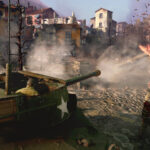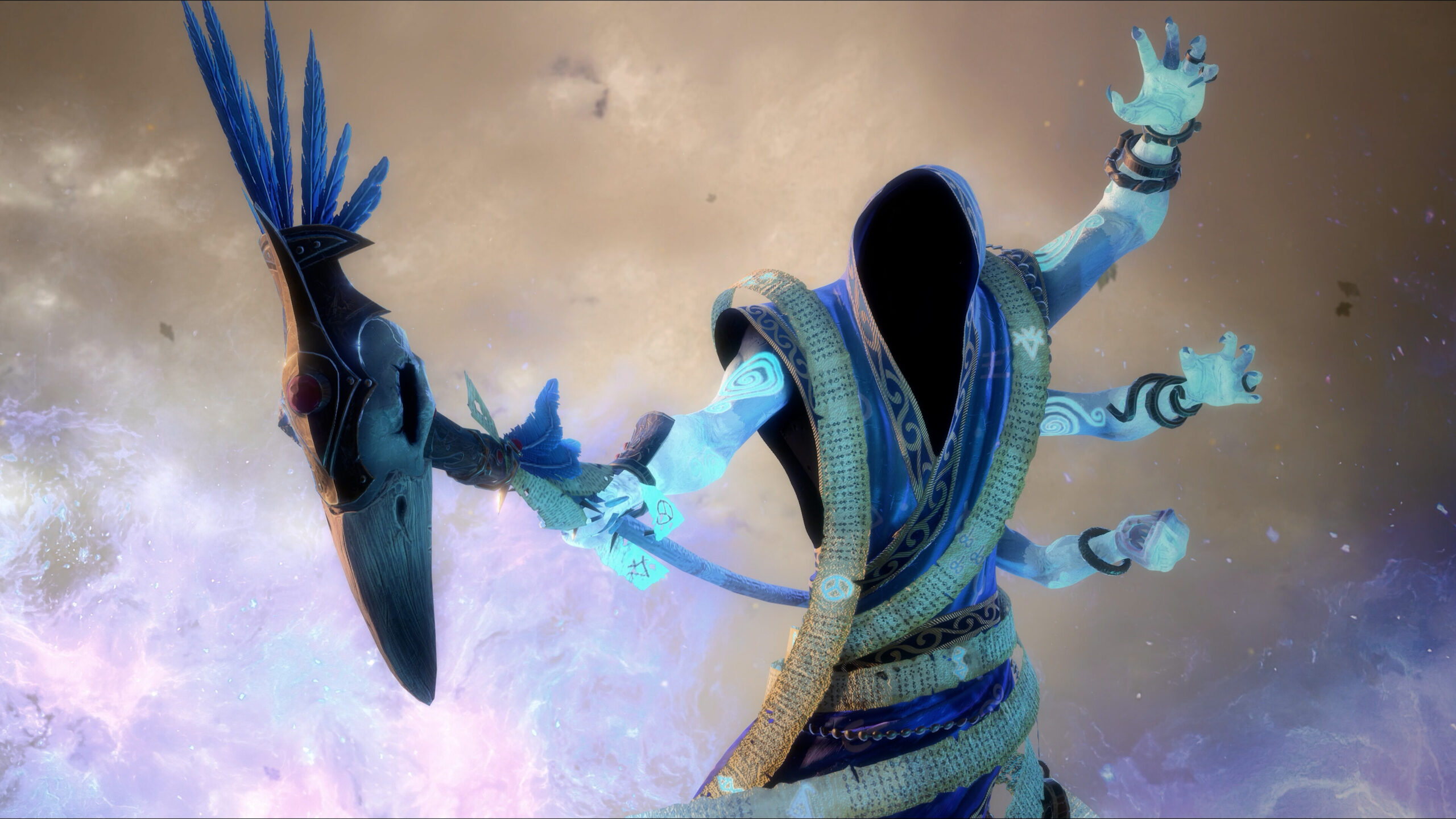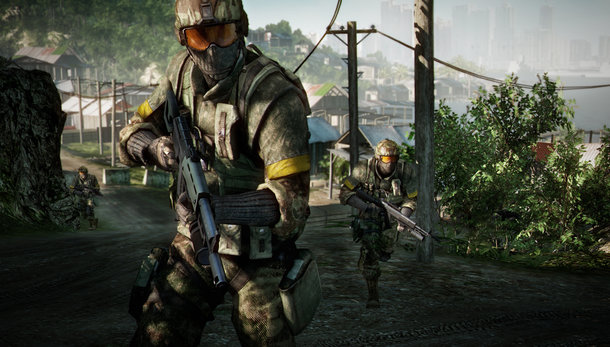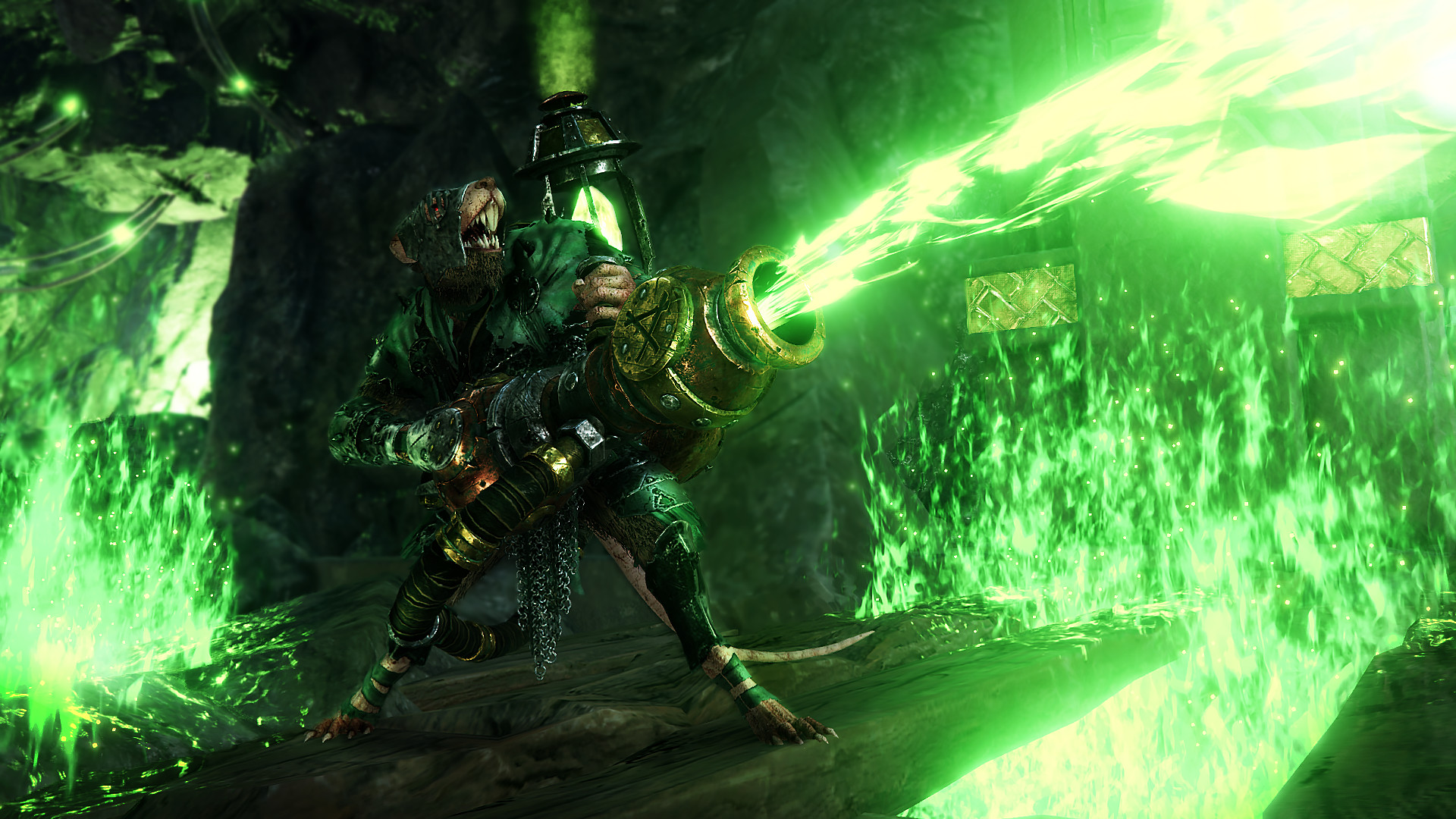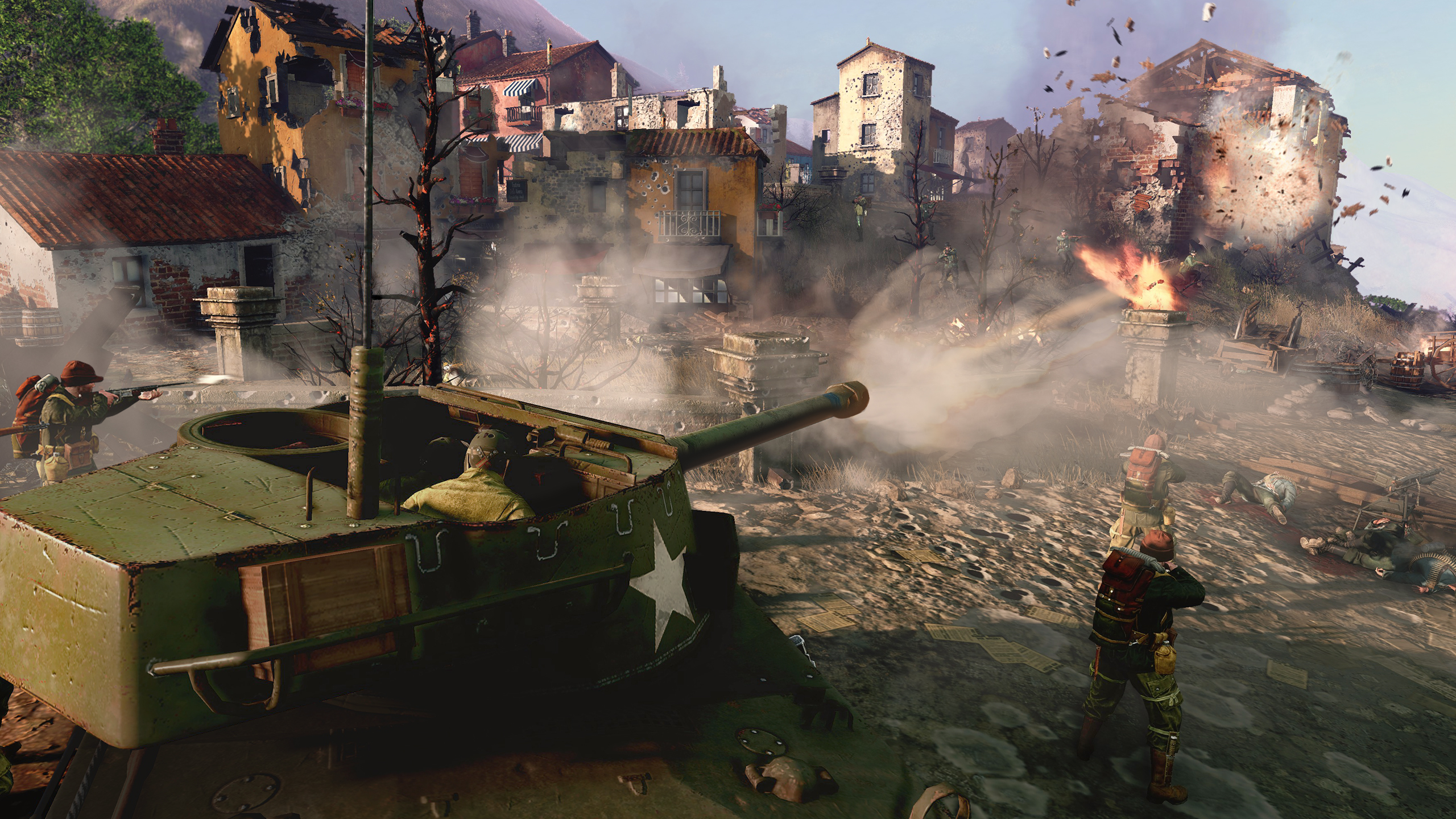Dedicated fandom has two states: cultishly devoted or aggressively cynical. So here’s something that Total War: Warhammer’s more jaded fans (It’s me, I’m the jaded fan) sometimes have trouble admitting: even if Creative Assembly was to Doomrocket the entire franchise tomorrow, it would still have long ago earned its place in strategy game history as an all-timer. The most recent series sales figures sit somewhere around 40 million, and it rarely slips out of Steam’s top 100. With a helping paw from Vermintide, it even convinced Games Workshop that bringing back a beloved setting might actually be worth a few quid.
The recent volatile discourse around both the game and studio may point to a mass fan exodus if the upcoming Thrones of Decay DLC isn’t something special. But wherever we go from here, the Horsham studio’s odd little experiment has already worked wonders. It’s worth noting that the trilogy works quite differently to other franchises. Any full games or DLC purchased since the release of Warhammer 1 are still relevant in Warhammer 3, making it effectively a trilogy-shaped single game. As a player, I’ve got 1700 combined hours logged. It’d be impressively delusional to pretend I haven’t got my money’s worth.
But we whinge because we care, and because we want nothing but the best for our disgusting little rat friends, and things have certainly been the wrong types of both grim and dark recently. The period since Warhammer 3’s launch, and especially the last few months following the release of the much-maligned Shadows of Change DLC, have felt like the most tumultuous in both Total War: Warhammer and Creative Assembly’s history. What’s a less cool sounding version of grimdark? Shitbleak, I guess. It’s all been a bit shitbleak.
What’s been happening recently?
(Image credit: Sega)
Rome 2’s rocky release may have reached fan folklore status, but even the jankiest of launches pales in comparison to the cancellation of publisher Sega’s most expensive project in the shuttered Hyenas, followed by reports of extreme mismanagement and mass layoffs. Around the same time, Warhammer fans were treated to price hikes, a lackluster expansion in Shadows of Change, and a series of monumental PR goofs.
This all stung especially hard in the wake of what I’d personally make an argument for being the series’ best piece expansion to date. The Forge of the Chaos Dwarfs should have been an unblemished victory lap, sitting alongside the similarly brilliant Curse of the Vampire Coast as the sort of grand-scale wish fulfillment a digital adaption allows for. A price hike (or re-adjustment, depending on how you view things) certainly didn’t help, but seemingly no expense was spared in bringing a near-exhaustive chaos dwarf army list to life.
George RR Martin once said that an inspiration for A Song of Ice and Fire were his years spent working in television, casting off the constraints of limited budgets and sets to create something deliberately unfilmable. Much of classic Warhammer feels the same, with disparate artworks and models to suggest, rather than clarify, limitless scope and possibility. And yet, Creative Assembly’s art and design teams frequently animate this stuff with such pitch-perfect vibrancy that each new unit reveal reminds us why we all fell in love with the setting in the first place. The chorfs are stuffed with intricacies and novelties, and represent how far the studio’s confidence and design chops have come. The expansion comes close to a Paradox game in terms of interlocking management toys to play with, and stands as proof that certain voices at the studio are still deeply passionate about the game.
Which made Shadows of Change such a surprising release.
Is the game in a better state than launch?
(Image credit: Creative Assembly)
While few would argue there haven’t been sweeping improvements since launch, to talk about the state of the game, it makes sense to view things through its latest addition: Tzeentchian trickster lord The Changeling. There’s a certain bitterness to the realisation that the most poorly received DLC to date is also one of the most introspective, and maybe even celebratory. It’s certainly the most meta. The Changeling’s headline ability is to take the shape of other legendary lords. It’s all a bit Dicaprio pointing at a monitor, like a Warhammer-themed costume party.
It wasn’t quite as entertaining in action as it was in concept, though. Many of the Changeling’s faction abilities work by subverting or twisting the rules to comical degrees. Design-wise, it feels lethargic: an admission that, after three games, the basics have been stretched so much that the only way forward is to break them. Faction diversity in a strategy game is all about offering new riffs on a core ruleset, sure. But the Changeling, with his nigh-invisible empire and choice of lords, feels like god mode. And cheats are only really fun once you’ve exhausted every other way to play the game.
Elsewhere, the DLC represented another sea-change, or rather, some unwelcome flotsam in the swimming pool; the pattern of Lord Packs DLC up to this point had been two new lords in the paid offering, alongside one free for an unrelated faction. Overly generous or not, this was the pattern we’d come to expect. Shadows of Change marketed itself as a new type of expansion. In practise, this meant all three lords were now part of the paid deal, suggested as a justification for the higher price. What’s more, the non-Changeling lords felt underbaked.
The Changeling, with his nigh-invisible empire and choice of lords, feels like god mode.
A more positive example of where the game currently sits is the high elf lord Imrik, whose free campaign has only grown more interesting as his location on the map has filled up with fresh foes and an old nemesis with new tricks. Many of Imrik’s starting enemies, from the aforementioned chaos dwarfs to comically buffed necromancer Helman Ghorst, have seen sweeping updates over Warhammer 3’s development cycle. With each, the world has become more vibrant. Ghorst’s new empire places him in conflict with Nurgle, while the chorfs have to contend with orc boss Grimgor constantly raiding their caravans once he himself deals with wayward ogre tribes. While Imrik hunts dragons, Slaanesh daemons corrupt Ulthuan, offering a tempting homecoming for the absent prince. Location can make or break a campaign, and both Imrik and the Dark Lands are flourishing, lack of actual greenery accepted.
The blossoming arms race of design iteration hasn’t been roses across the board, though. I cannot overstate what a nightmare it must be to balance so much variety, but that doesn’t help poor Karl Franz. The most popular lord across all three games has sat in his worst spot yet ever since Festus turned up late 2022. It’s the same frustrating catch 22 that must be all too familiar to both fans and developers of any game of this scale. As fans, we want each new addition to be more exciting than the last, but this also means old factions getting regularly left in the dust. The team behind the games have often spoken about how balance, in the strictest definition of the phrase, isn’t necessarily a priority—it’s primarily a singleplayer game, after all. Fun presumably is though, and by all accounts, players just haven’t been having fun with the Empire since it transformed from a good spot for beginners to one of the most frustratingly stacked campaigns in the game.
Old World, new tricks?
(Image credit: Sega)
This is supposedly where the next piece of the puzzle fits in. Thrones of Decay, originally slated for last December, is bringing updates for the Empire, alongside Nurgle and the dwarfs. It’s likely still a good few months off yet. The studio has wisely opted to try and repair their relationship with the community first, pushing TOD back indefinitely. Optimistically speaking, both the quality of the chorfs and reports of tumult at the studio suggest that the lackluster quality of the latest DLC was a case of resources and management woes, rather than lack of care. Creative Assembly seems to agree; its recent (slightly syrupy, but respectably earnest) statement announced a delay on Thrones of Decay in favour of free updates to Shadows of Change. A laudable approach, but perhaps this statement feeling like such an olive branch was indicative of just how lacking the studio’s communication has been leading up to it.
While not technically a live service game, the trilogy’s longevity and fluidity means it flies close to the live service sun at times. A monkey’s paw in terms of relevance and novelty vs fan expectations and dev load, for sure, but I don’t believe Creative Assembly has done much to disabuse the player base of the notion that they should expect regular iteration, especially as they’re effectively being charged a piecemeal subscription fee for the journey.
It’s this strange limbo we find ourselves in at the moment. Since Warhammer 3’s launch, we’ve gone from some real highs to the very real possibility that Thrones of Decay, if it flops, might be the last piece of DLC the game ever receives. We’ve seen it before, after all. So this is where we are now, a smattering of hopeful light breaking through the dark times. Shiny shitbleak, if you will.
No look into the state of Total War: Warhammer would be complete without a mention of its dedicated and unbelievably talented mod community, who recently figured out custom maps. You checked the subreddit one week, there was a playable, expanded map of a tiny islet named Albion. Madness, we all thought. Think of the possibilities. You checked the next week, and the already legendary ChaosRobie had gone and created an entire campaign depicting The Old World to scale. We all made sure we weren’t smelling burnt toast, and then dove in. If there’s any part of the trilogy to be truly excited about, the future of mods is it.
As I said, we whinge because we care. Like everyone in the games industry at this point, Creative Assembly deserves a long break. And yes, it’s already gone above and beyond many times over the trilogy’s lifecycle. It once gave everyone a free dwarf voiced by Brian Blessed. None of this changes the unfortunate reality; the next updates are going to have to be something special if this thing doesn’t want to go out on the same sour note as the tabletop Warhammer Fantasy. Age of Sigmar is cool though. Fight me.





